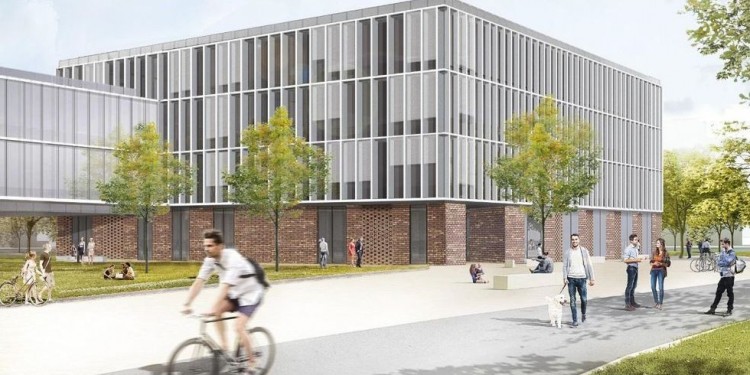
“Body & Brain” under one roof
The name speaks for itself: what the experts at the planned “Body & Brain Institute Münster” (BBIM) want to do is to investigate diseases and their origins from the point of view of the interaction between the brain and the body. It is, therefore, only logical that representatives from a range of disciplines should work closely together here. This large-scale project, involving cooperation between the University of Münster and the University Hospital Münster (UKM), is scheduled to receive funding of around 70 million euros, having now overcome a major hurdle. The German Council of Science and Humanities has declared itself in favour of the construction of the BBIM, and this clears the way for joint funding on the part of the national and the regional state governments. The final decision on the funding will be made – on the basis of the recommendation given by the Council – at the Joint Science and Humanities Conference, at which representatives of both national and regional state governments will be attending, and which is expected to be held in July.
“We are delighted at the positive assessment of the concept for the BBIM,” says Prof. Johannes Wessels, the Rector of Münster University. After the construction of the Center for Soft Nanoscience (SoN), he adds, and taking into account the Multiscale Imaging Centre (MIC) currently being built, the BBIM offers “another great opportunity to expand the focuses of research undertaken at Münster University – in this case, the field of biomedicine – and to make them even more visible, both nationally and internationally.”
The Body & Brain Institute Münster aims to gain a better understanding of the interaction between the body and the brain and then to develop and improve concrete strategies for the treatment and care of certain neurological and psychiatric disorders. “Our criterion for selecting these disorders was whether they are particularly suitable as ‘model disorders’, so to speak, enabling us to carry out more in-depth research on typical causes and processes,” says Prof. Heinz Wiendl, who is Director of the UKM Clinic of Neurology and one of the initiators of the BBIM. As examples he cites multiple sclerosis, autoimmune encephalitis (diseases of the central nervous system caused by the body’s own immune system), and anxiety disorders. “The focus is on the role and the modification of inflammatory and metabolic processes in the function or the dysfunction of the central nervous system,” Wiendl explains.
Around 200 researchers are due to work at the BBIM in future. “Our aim is for the path between the patient’s bed and the lab, and back again, to be short and fast. Any issues which crop up in a patient’s case should immediately be integrated into the research being done, and solutions that are found should likewise benefit the patient directly,” Wiendl points out. The potential inclusion at the BBIM site of patient groups and of the biomaterials and biosignatures available are a major advantage for the concept, he adds.

The Council of Science and Humanities, which advises the national and the regional state governments in Germany on matters concerning the content-related and structural development of universities, academic work and research, recommended a total of xxx projects for funding. Three of these are to be set up in North Rhine-Westphalia: in addition to the BBIM, the Council’s votes went to the Centre for Theoretical and Integrative Neurosciences and Cognitive Sciences at the University of Bochum and the CHEOPS 2 high-performance computer at the University of Cologne. The state of North Rhine-Westphalia quantifies total funding for the three projects at 160 million euros.
Further information on the Body & Brain Institute Münster
Including laboratories and offices, the BBIM covers a total usable area of around 3,900 square metres, which are distributed essentially over three standard lab clusters, including offices, and over rooms for five so-called core facilities. These are facilities in which modern lab methods are available for all researchers to use. The total costs for the BBIM amount to a good 70 million euros, 59 million of which will cover planning and construction work.
The BBIM is planned as the central part of a block of buildings which will extend along Rishon-le-Zion Ring and be built on what is currently the carpark at Coesfelder Kreuz and on the adjacent link road (later to disappear) to Domagkstraße. Directly to the left will be the Medical Research Centre (“Medizinisches Forschungs-Centrum” – “MedForCe” for short), which has long been planned. Together with other buildings and a multi-storey carpark, the entire site is due to be developed step by step into the new Research Campus East (“Forschungscampus Ost”) in line with UKM’s Masterplan 2028.
